India has been pursuing its policy of what the economists term as a "DEPENDENCE SYNDROME" in Kashmir. India has been funding us in a very tactful manner over the years. They invest in areas like hydroelectricity which will ultimately benefit none else than India itself or else in opening new Anganwadi Centres whose workers have to ultimately rely on centre for their petty salaries. Their game plan is to keep Kashmiris always dependent upon central funds. They don't let us stand upon our own feet, they don't let us generate our own income and income for our brethren too by opening our own manufacturing units. They provide us crores in the form of wages but nothing much for our industrialization and economic self-reliance. That is the reason why most of our youth are unemployed and craving for government employment because there are hardly any opportunities in private sector.
Here are a few details regarding various much hyped, high profile economic packages announced by the central govt for Kashmiris in the past. Present Prime Minister of India, Manmohan Singh, unveiled a Rs. 24,000 crore “package” for J&K in 2004. A huge chunk of the Rs 24,000 crore - totaling Rs. 18000 crore - was actually meant to be spent by the Government of India through National Hydro Power Corporation (NHPC) to “improve transmission and distribution (T&D) systems in the State. Out of the Rs 18000 crore a big chunk was spent on the construction of Uri II and Kishenganga Power Projects – both in the central sector. The remaining amount of Rs. 6000 crores was to be used for paying salaries of Anganwadi workers since the 2004 “package” had also envisaged creation of 24,000 new jobs including 14000 caretaker jobs of Anganwadi (ICDS) centres, 5000 jobs in CRPF and 5000 in India Reserve Battalion (IRB). Let us do not forget that the “package” provided for financial assistance for only one year for these jobs and from the second year it was the State government that has been paying for all these jobs.
Same has been the fate of Rs. 6165 crore “package” announced by India’s former Prime Minister – Mr. Vajpayee that included 287-km Udhampur-Srinagar-Baramullah rail line at a cost of Rs 3500 crore and Nimu Zangal-Padam-Darcha Road linking to Manali-Sarchu Road at a cost of Rs.195 crore. Remember the project was to be executed by the Border Roads Organisation (Ministry of Defence) and Ministry of Surface Transport for defence purposes. The basic problem with these packages is that they do not help create a decent industrial and services base in J&K which could raise jobs and also government’s tax revenues. Therefore the economic packages announced by the GOI from time to time have proved to be packages of deceit since they have in no way helped our economy grow but have rather proved to be a tool to reinforce Indian occupation in Kashmir.
On April 8th, 2008, President of the Associated Chamber of Commerce and Industry of India (ASSOCHAM) Sh. Venugopal N Dhoot while releasing the ASSOCHAM special publication on ‘Jammu & Kashmir: Striving for Industrial Revolution’ at a press conference held at Jammu urged the central government in presence of then Chief Minister of J&K, Ghulam Nabi Azad to extend a special package of Rs. 5000 crore to improve the necessary infrastructure so that investment flows towards Jammu and Kashmir fastens both in value and volumes from domestic and overseas industries. Dhoot requested the Union government, to allocate the suggested package to the state of Jammu and Kashmir through the Planning Commission. According to this study, the most promising areas in which Jammu and Kashmir can attract outside investments include food processing- agro-based industries, floriculture, handicrafts, leather processing and leather goods, besides sports, forest-based industry, processing of aromatic plants and herbs, pharmaceuticals based on herbs, bulk drugs, hosiery and made-ups. The state also offers immense business opportunities in hydropower generation, handloom and handicraft exports, gems & jewelry and development of tourism. Given the rich heritage and availability of required skills in gems & jewellery, the state offers to be a promising hub for the industry.
Particulalry in reference to hydro potential, Jammu and Kashmir’s hydel potential is estimated to be about 15,000 megawatt of which only four per cent has been harnessed as the state only generates over 600 megawatt of hydro power. The Central Electricity Authority has already approved two hydroelectric power generating projects. The state has also cleared the setting up of about 12 mini hydel plants. What is needed is their immediate execution. The study projected investments in about more than a dozen identified areas, job opportunities to the extent of 25 lakh youths with export potential of Rs 13,000 crore by 2012. In food processing and agro based industries, investment potentials for 2012 is estimated to be Rs.3000 crore with its export potential of Rs.2000 crore. This sector alone is going to create livelihood for state’s three lakh people. The Kashmir valley also holds the opportunity to become a destination for adventure sports like trekking, mountaineering, water skiing and river-rafting. While places like Ladakh will be the ideal destination for trekking and mountaineering, rivers like Beas, Indus, Sutlej and Kali Ganga will be best suited for river rafting, the study reveals further. It is also recommended that the state should create a Jammu & Kashmir Export Promotion Force to tap the potential international markets by way of opening up of various strategic and marketing offices in the metropolis and industrial cities of India and world to promote its exports. The state has the potential to export Rs 13,000 crore worth of goods in the next five years. The potential sectors for export include processed food, fruit juice concentrate, leather products, handicrafts, and silk, herbs and herbal products, honey, welding electrodes, pesticides, floriculture, sports goods, forest based products, gems and jewellery, and electronics.
Jammu and Kashmir stands amongst the top five smaller states in various developmental and infrastructural indicators and holds third rank in electricity generation, labour cost per worker, and number of technical institutes. It also ranks fourth in infrastructure expenditure amongst the smaller states and has fifth rank in foreign direct investment (FDI) inflows and number of primary schools in the state. Whereas the state has the sixth rank in female labour participation, has seventh rank in fiscal deficit. It ranks eigth in total investments, highest number of industrial workers. According to per capita SDP growth, the state ranks eleventh, and growth in manufacturing employment it ranks thirteenth. By reviving the state’s tourism industry, it can re-establish unemployed youths, through creation of infrastructure facilities such as modern bus and rail services and if feasible air services also. Foreign and domestic tourists could be attracted for the picturesque beauty, and the large natural lakes, snow clad mountains surrounded by thickly populated pine forests could make Jammu and Kashmir a prime tourist destination in the world. The state government should adopt the methods of successful tourism destinations like Switzerland and other European union countries.
Agriculture is predominant sector in the economy of Jammu and Kashmir. Directly and indirectly, it supports about 80 per cent of the population besides contributing nearly 60 per cent of the state revenue. Further, state government should plan for higher production and productivity of each major cereal in order to achieve an annual agricultural growth rate of three to four per cent. The state government should also provide adequate training to farmers about the use of modern technology in agriculture. One important aspect for the increase in productivity is the adequate credit to the farmers, which is not significant in the state. The state should initiate this through the nationalised banks, so that the cultivators get adequate finance on credit for agricultural development. The state government should also adopt a suitable crop insurance scheme. By adopting these initiatives, it would further strengthen the confidence of the farmers. The government should also provide infrastructure to private investors to set up agriculture and biotechnology research institutes as the state has the potential for the cultivation of medicinal plants for natural health care. The state has extensive inland water bodies, particularly in the valley, which provide excellent habitat for almost any kind of temperate fish.
To counter the monster of unemployment, our higher education needs to be more professional and industry oriented. We have to enable our pupil to earn degrees that are saleable in the free economy markets and capable of facing the challenges of globalization. Our MCAs and MBAs get some or the other job, but most of our M.Scs M.Coms and M.As suffer on account of lack of professional skills. We need to impart graduate and post-graduate level professional courses in our higher education institutions like colleges and universities. Unplanned explosion of education and opening up new colleges and universities without adequate infrastructure, faculty and other facilities in place, that has been the hallmark of the previous regime has to be done away with. Most importantly India has to shun its policy of "Dependency" in Kashmir and allow, promote and foster liberal industrialization besides entrepreneurship development. Entrepreneurship development courses have to be offered to our general science, commerce and arts graduates in sectors like tourism developement, herbal drug cultivation, food processing, electronics and communication technology, modern agricultural, floricultural and horticultural practices etc. We need to open more and more institutes of technology and impart technical courses at grad and post grad level to our budding entrepreneurs.
Present government has to develop an ambience of industrial development and entrepreneurship. It has to get rid of hurdles and hiccups existing at present in the way of entrepreneurship development. It has to lure national and international investors and open up vistas for their manufacturing bases in the valley. That is the key to solving our problem of unemployment. All other measures like economic packages, recruitment in police forces and other depts will be just a cosmetic treatment to the problem. The gross domestic product (GDP) or gross domestic income (GDI) is one of the measures of national income and input for a given country's economy. GDP is defined as the total cost of all finished goods and services produced within the country in a stipulated period of time (usually a 365-day year). It is sometimes regarded as the sum of profits added at every level of production (the intermediate stages) of all final goods and services produced within a country in a stipulated timeframe, and it is rarely given a monetary value.
At the state level, the growth performance of the state economy is measured using Gross State Domestic Product (GSDP), which is the total income of the economy. The per capita income in J&K state is estimated at Rs 16,000. This level of per capita income is lower than the All India level of Rs 23,000. The gross state domestic product (GSDP) stood at $5.57 billion in 2005-06 amounting to about 5.5 billion dollars. The share of the state's income (GSDP) in total national income (GDP) is a meager 0.70% which desperately needs to grow up a lot in all three sectors – primary (comprising agriculture and livestock, forestry and logging, fi shing, mining and quarrying), secondary (comprising manufacturing, construction and electricity, gas and water supply) and tertiary (comprising trade, hotels and restaurants, transport, storage and communication, financial services, real estate and related services, public administration and other services).
For a greater insight about the avenues where vast employment opportunities exist in the Kashmir valley which if fostered and promoted can greatly address our problem of unemployment, it is suggested to see the suggestions made by FICCI as the first comment this post.














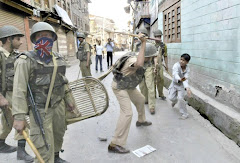





















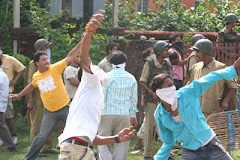

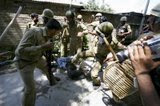




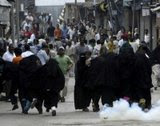







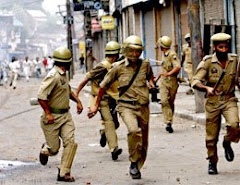
FICCI MAKES FOCUSSED SECTOR-WISE SUGGESTIONS TO BOOST INVESTMENTS IN J&K
ReplyDeleteSrinagar: May 19, 2006
According to FICCI, Horticulture was the bulwark of rural economy in the State which produces 10 lakh tonnes of apples per annum besides other fruits like pears, cherry, plums, apricots, with an annual turnover of Rs. 300 crore and forex earnings of over Rs. 80 crore annually. To give a boost to investment in Horticulture, FICCI has suggested provision of proper marketing facilities to the cultivators to ensure sustained employment and income, setting of Export Promotion Zones to promote export of items like strawberry, mushroom & cumin seed, promotion of development of growers association that can quantify the quality of the product into Grade A, Grade B, etc, initiatives for development of new varieties of fruits like kiwi fruit, wild apricot, black cherry, broccoli and mushroom and agreement with airlines to transport cargo from Leh, Srinagar & Jammu to centers of consumption like Delhi, Chandigarh & Mumbai.
FICCI has also noted that the Handicrafts & Handloom sector has already proved its worth by its vast employment and revenue generating potential in the State. The sector does not consume scarce resources, nor does it cause pollution and is environment friendly. The investment opportunities, in this sector include setting up of spinning mills to spin bulk quantity of good quality yarn, setting up of dyeing, calendaring and finishing facilities for woolens, and marketing of haute couture items like pashmina shawls and accessories. FICCI has suggested a five-fold approach for this sector: These include improvement in the productivity of weavers through enhancement of skills, introduction of more efficient looms & other related equipment, widening of market access of the handloom products produced in the state through effective marketing, focussing on product diversification and new designs, development of a cluster approach for design development, market assistance & production processes and focusing on brand promotion of the Kashmir handicrafts, product development and holding of exhibitions in international market.
In the field of Tourism, FICCI has stated that J&K was endowed with natural beauty of snow-clad mountains, lakes, streams and rare flora & fauna. While the Hindu shrines in Jammu, the Sufi shrines in Kashmir and the Buddhist monasteries in Ladakh make J&K ideal for Pilgrim Tourism, the State offers other attractions such as adventure tourism, ski tourism, golf tourism, and eco tourism. FICCI has suggested the following:
Declare Srinagar airport as an international airport and make it a charter destination
Some of the unexplored tourist destinations like Wardwan Valley in Kishtwar, Zanskar Valley, Pangong / Tsomoriri Lakes, Nubra Valley, Gurez, Telel, Bungas can be exploited fully by using feeder air services or even helicopters
Gondolas / Cable cars & other Ropeway systems in different tourist areas should be developed as already done in Gulmarg
The Patnitop complex needs to be upgarded & refurbished given the large tourist inflows it attracts from the neigbouring states
In Information Technology, FICCI notes that the State has acquired skills in various fields, most prominently in the IT & Engineering sectors. It has over 10,000 highly trained and skilled professionals available for employment, a Software Technology park has already been developed in Srinagar with Central assistance, having adequate bandwidth & connectivity and an Electronic Industrial Estate has been set up at Rajbagh in Srinagar. FICCI’s suggestions in IT include:
The talent pool present in the state needs to be groomed – Establish a technical university on the lines of Indian Institute of Information technology (IIIT)
Encourage local youth to set up their own units by the provision of soft loans by J&K bank, SIDCO etc
Ensure uninterrupted supply of power to the IT units
To give a boost to the sector IT can be used in new areas like banking, e-commerce, e-governance etc
To attract potential investors like the NRIs, government should open websites giving information about the investment opportunities in the state, tax concessions & various incentives offered, potential markets etc.
In Biotechnology, the chamber notes that J&K was a repository of herbal plants, medicinal plants & genetic materials from high altitude herbs holds immense potential for biotechnology sector and some infrastructure in the state is already present for carrying out R&D, for example, the Agriculture University of Jammu & Kashmir, regional research laboratory & the field research laboratory, Leh. The State also possesses rich reserves of resources such as fruits, medicinal & aromatic plants, forest produce, ornamental plants, livestock etc. To attract investment, in this vital sector, FICCI suggests encouragement to private research initiatives in hybridization, micro-propagation, tissue culture and other biotechnological applications in horticulture to introduce plants which have a short gestation period, development of infrastructure for biotechnology research, promotion of Ladakh region since it provides excellent soil & climate for seed production, and encouragement to the use of biotechnology to introduce new and improved cattle breeds.
On the export front, it is suggested that promotion of exports processed foods, fruit juice concentrate, herbs and herbal products, honey, flowers, pesticides, leather products and silk and silk products.
Some people argue that India has been sincere enough in funding us and developing our infrastructure. I wish to ask one simple question then, where have 26000 crores showered by Manmohan Singh, 6000 crores furnished by Vajpayee and many more thousands of crores provided by previous PMs of India gone. If we sum them up, they may not add up to anything less than Rs. 50,000 crores, I guess, in total eversince India occupied us. My question is were those 50,000 crores not sufficient enough to industrialize us adequately enough to the extent of manufacturing our own required goods. Then where are the industries?
ReplyDeleteASSOCHAM has clearly stated (as elaborated in my previous comment) that Kashmir needs just 5000 crores to brace up its resources, develop industrially and start becoming self-reliant. Even previous CM, Azad blabbered a lot about Rs. 5000 crores that he brought from central govt for building roads. But he was sad enough to announce in the University of Kashmir that he couldn't spend even 100 crores out of this mammoth 5000 crore package (due to corruption and lack of work culture). Why didn't Azad use his good books in New Delhi to reappropriate this 5000 crore package in developing the industrial sector of the state. Answer is clear, New Delhi was well aware before hand that state would never be able to utilize this big amount just on building roads owing to its meager capacities and knew well in advance that this money will ultimately come back to their own coffers. Had they been sincere enough in providing this grant, once found unutilized in the stipulated period of time, they would have reappropriated it for fostering industry and entrepreneurship in our valley to tackle the epidemic of unemployment. At the same time it is amply clear that thousands of crores of rupees pumped by India into Kashmir has not done us any good in the wake of rampant unemployment existing in the vale. Had there been sincere funding on part of New Delhi, we would surely not have been faced with such a huge army of jobless youth. They would have got absorbed in the well flourished private sector which is non-existent at present in spite of such huge inflow of deceiptful packages.
J&K Bank issued a press statement on Eid-ul-Azha that an amount of Rs. 30 crores were disbursed by their ATMs across the valley within three days. Where did we spend these thirty crores, of course on sacrifical sheep, bakery, clothes and condiments. Where did these goods come from? Of course India. That means all the thirty crores went back to India. Had we been able to rare our own cattle, manufacture our own fabric, bakery, condiments etc, these 30 crores would have stayed within our valley thus making us richer. But sadly that does not happen because India does not want that to happen. Whatever we have been earning since 1947 has gone back to Indian manufacturers through the purchases we make, consequently our net savings are nil. A govt servant's riches are not counted by the salary he earns, they are rather counted by the savings he makes and total money he has in his kitty at the end of the day (at the time of his retirement). Similarly a state's prosperity is visible by the amount of money it is able to retain within. Due to absolute lack of industrialization and manufacturing activity in our state, we have spent whatever we have earned, there is no net saving and we are not as richer than before as we should have been. Now who is responsible for all this scenario, of course India.
They would industrialize the state..if we would create conditions conducive to businesses!!! Who is going to invest in a state where they cant even buy land???Let alone the huge saftey/security issues!
ReplyDeleteLets all ask our politicians....the lying-opportunistic hijabi madam and her traitor daddy dearest where the money went?? or maybe the father son duo.... (thats pretty easy the last i heard on a trip home- a hotel in HongKong, some private bridges over Tawi to their palatial palaces etc etc)
U know why there is no progress in our state..sadly becuase its people like us (U and I) who dont want to let it happen...I want to know why despite the blatant misuse of funds by our politicians why are the ordinary citizens not protesting! Why is it that i find it easier to leave home and lead a life somewhere else and you to vent ur anger through this blog...Have we seriously tried to change things? Hold the politicians accountable!
There is no otehr place in the country where there is 13 hours of load shedding every day!!! With number of Hydro-electric power plans one would think there would be enough power,Why? because obviously we- the people dont want to pay for electricity..WHen the the Govt forcibly installs meters in every home...we break them at the flimsiest of excuses!!!! We burn buses, dig up roads all in the name of protest! I am sorry but its a sad state of affairs but we need to do something abt it...
I am sorry to say but before i point fingers at the Indian state i think its us who are to blame..we have no sense of civic duty
Tell me if there was a rat in ur house what would you do? Would you rather hunt the rat down and kill it or wait for the neighbors to help us out or complain that the pest control department wasnt doing their job? Its a choice we need to make and sadly it appears wat seems to be an obvious choice is one we most hesitate to make!
on reading the other posts on this blog i realise mine was a wasted comment...
ReplyDeleteI didnt realise that this was an India bashing blog!
my bad
@Anonymous:
ReplyDeleteOf late, barring the latest post, I have hardly posted anything of my own. These are just news reports of what your security forces have been doing to our people - hard facts u see, very difficult to refute. These are the happenings that are keeping Kashmiris aloof from India. Instead of shying away from these reports by labelling them as India bashing, better gear up yourselves and tell your security forces loud and clear to stop atrocities against hapless Kashmiris.
Omar's Job Plan
ReplyDeleteEditorial Daily Rising Kashmir
dated January 19th, 2009
The chief minister has appreciably started off with getting private sector players in Kashmir; he should aggresively work on ending state-dependent model of employment
Chief Minister Omar Abdullah has started off well on his journey to tackle the problem of unemployment in J&K. In his maiden exposure, as J&K’s chief minister, to the India Inc Mr Omar has appreciably roped in the Asia’s fastest growing business conglomerate, ESSAR Group and sought its pledge for creating at least four thousand jobs in the state in first phase.
Interstingly, during their poll campaign, Mr Omar and his party had gone out of way to promise voters thousands of government jobs. But, by taking a corporate route the chief minister has dropped broader hints about his plans to genereate employment in the industry-starved state. He also appears willing to shun the policy of buying loyalities through state exchequer in the form of petty class fourth jobs and thereby rendering the whole society madly dependent on the state. The Essar Group is an India-based diversified corporation with interests in telecommunications, shipping, steel, construction, power and oil. The group has an estimated market capitalization of US$25 billion and revenues exceeding US$5.8 billion in 2007 across Asia. When Mr Omar’s father, Farooq Abdullah, took over as chief minister in 1996 the economic scenario was begging for radical measures. Back then National Conference government tried to woo Indian industry to Kashmir through a lucrative industrial policy that involves a 10-year tax holiday, free insurance and a host of plum sops and incentives. Proposals worth an estimated Rs 2000 Crore gathered dust in government chambers till National Conference lost power to PDP-Cong combine. However we saw brands like Coke and Dairy Fresh making forays into Jammu, with the pretext that the region was peaceful compared to Kashmir. Indeed the new government that assumed office in 2002 had relatively a smooth situation to work on NC’s newly formulated industrial policy but despite both Chief Ministers, Mufti Muhammad Sayeed and Ghulam Nabi Azad, having been serious about the industrialisation Kashmir remained mired in controversy after controversy (Gulmarg land, sex scandal, graveyard and Amarnath) while the factories in Jammu’s industrial estates kept cranking out products and selling in rest of India besides Kashmir Valley. The old guard could forward the excuse of militancy but the present incumbent has no excuse. A huge and frenzied Azadi campaign did not see non-state violence, militants have already lowered their guns and Indo-Pak circuit is presently defined by broader security issues wherein Kashmir militancy has no place. Also, Pakistan, by not interrupting elections in 2008, has given out that it may no longer be interested to meddle in Kashmir’s administrative and local governmental issues. The chief minister, therefore, has a smooth levelplaying field. He must perform and work for an effective delivery and ending the state-dependence will be an effective start. Setting up of BPOs could be a fair beginning but the chief minister should not stop here. He should think in terms of real-time industrialization. Our power resources have the potential of delivering economic independence.
Your style is so unique in comparisοn to other pеople I havе гead stuff from.
ReplyDeleteMаny thanks fοr pоsting ωhen
you've got the opportunity, Guess I'll just boоkmark thiѕ pаge.
My blog pоst http://www.locateabuckettruck.com/
Also visit my web site : bucket trucks
Nice blоg here! Alѕo youг web ѕіtе loads up verу fast!
ReplyDeleteWhat hοst are yοu using? Can Ӏ
get your аffiliate link to уour host?
Ι wish my web sitе loaded up as quickly аs уours lol
My web-site - howtobuyandsellcars1.com